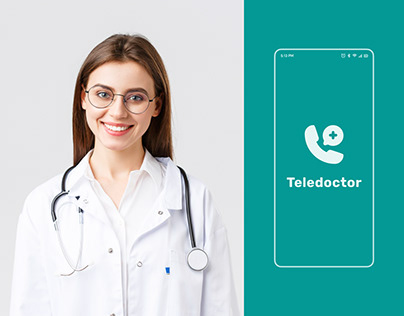Teledoctors: Changing Accessibility to Healthcare Services
Teledoctors: Changing Accessibility to Healthcare Services
Blog Article
Discovering the Conveniences and Challenges of Teledoctors in Modern Health Care
As the health care landscape advances, teledoctors have actually arised as a critical part in bridging gaps in medical accessibility and performance. While they use the pledge of getting to remote areas and decreasing operational prices, the journey is not without its difficulties. Personal privacy problems, the digital divide, and cybersecurity risks pose substantial challenges that must be resolved to harness their full potential. How can the health care industry balance these advantages with the intrinsic challenges? This dilemma welcomes a much deeper expedition into the transformative duty of teledoctors in forming the future of health care distribution.
Expanding Accessibility to Care
Telemedicine has actually become a crucial advancement in modern healthcare, dramatically increasing access to take care of diverse populations. By leveraging electronic technology, teledoctors have actually transformed the typical medical care shipment design, making it feasible for patients in underserved or remote areas to receive timely clinical assessment. This evolution is specifically beneficial for people living in rural areas, where the shortage of health care facilities and experts frequently brings about delayed or inadequate treatment.
Teledoctors are critical in linking the void produced by geographical obstacles. With virtual appointments, people can access a broad variety of medical care solutions without the need for considerable travel.
The integration of teledoctors right into medical care systems also supports the management of public wellness situations by assisting in quick reaction and triage. Throughout pandemics, as an example, virtual assessments lower the problem on physical medical care facilities, minimizing exposure risks for both individuals and health care carriers. As telemedicine remains to advance, it guarantees to reshape the landscape of healthcare accessibility, making it more inclusive and reliable.
Cost-Effectiveness of Teledoctors
The cost-effectiveness of teledoctors is a significant aspect driving their prevalent adoption in healthcare systems. By minimizing the demand for physical facilities and in-person brows through, teledoctors offer a more affordable choice to conventional health care delivery. This version allows healthcare companies to lower functional expenses, such as those connected with maintaining physical offices and utilizing substantial on-site staff. teledoctors. Subsequently, these savings can be passed on to people in the type of lowered appointment costs, making healthcare more easily accessible to a more comprehensive population.
Moreover, teledoctors promote a much more reliable use health care resources by decreasing unneeded emergency situation room sees and hospital admissions. Patients can access timely appointments for minor disorders or follow-up care, which aids to minimize the concern on overstretched medical care facilities. This efficiency not only brings about set you back financial savings for health care suppliers however additionally reduces the financial pressure on clients who might otherwise encounter expensive hospital expenses.
Additionally, teledoctors can assist in managing persistent conditions better by offering regular tracking and prompt treatments. This positive approach can avoid difficulties, thus lowering long-lasting treatment costs. Overall, teledoctors offer a practical solution to the intensifying expenses of healthcare, while preserving quality treatment shipment.
Enhancing Individual Comfort
While cost-effectiveness plays a critical role in the increase of teledoctors, improving individual ease stands as another engaging advantage of this healthcare version. With the integration of teledoctors, clients can bypass the traditionally time-consuming process of scheduling and attending in-person appointments.
Furthermore, teledoctors use versatile scheduling, permitting clients to set up examinations sometimes that ideal fit their individual and specialist dedications. This flexibility is vital for individuals balancing requiring work routines or family members duties, making certain that healthcare can be incorporated effortlessly into their lives. Additionally, the capability to gain access to index clinical experts from the convenience of one's home can bring about enhanced individual interaction and adherence to therapy strategies, as the obstacles to seeking treatment are lowered.
The convenience supplied by teledoctors not just improves the patient experience however likewise adds to an extra receptive and efficient healthcare delivery system, ultimately supporting far better wellness results.
Dealing With Personal Privacy Concerns
Amidst the growing fostering of teledoctors, privacy concerns become a considerable factor to consider. As health care progressively relies upon digital platforms, making certain the privacy of client info comes to be paramount. The digitization of clinical documents and the usage of telecommunication innovations necessitate durable safety and security measures to safeguard sensitive information from unauthorized accessibility and violations.
Doctor should comply with strict guidelines, such as the Medical Insurance Portability Resources and Liability Act (HIPAA) in the United States, which establishes nationwide standards for protecting clinical information. Compliance with such guidelines is critical in preserving patient trust and guaranteeing their data is managed responsibly. File encryption of information, secure interaction channels, and routine audits are some of the procedures that can be implemented to boost data security.
In spite of these actions, obstacles persist. Cybersecurity dangers are progressing, and medical care organizations should continue to be cautious to new susceptabilities. Additionally, informing both patients and medical care providers about ideal methods in information personal privacy is important. This includes recognizing the limitations of data and the significance of protected login qualifications. teledoctors.
As teledoctors become a lot more indispensable to health care distribution, resolving privacy worries is important to make sure both the efficacy and dependability of these solutions.

Navigating the Digital Divide
Linking the digital divide is an essential challenge in the widespread fostering of teledoctors. The advantages of teledoctors-- such as enhanced accessibility and ease-- remain unreachable for numerous individuals who could most profit from them.
Efforts to mitigate this divide necessitate a multi-faceted method. Policymakers must prioritize facilities development to improve internet accessibility in underserved areas. Additionally, initiatives to support innovation for low-income web link houses can play an essential duty in making certain equitable gain access to. Health care carriers and community organizations need to work together to offer electronic literacy programs, encouraging people to browse telehealth platforms confidently. Additionally, developing user-friendly user interfaces can further enhance accessibility for all demographics, particularly the elderly.

Final Thought
The assimilation of teledoctors into modern-day health care uses significant benefits, including increased accessibility to care, cost-effectiveness, and improved client benefit. Nevertheless, difficulties such as personal privacy problems, the electronic divide, and cybersecurity dangers need to be resolved to make the most of these benefits. By implementing durable data defense steps, improving electronic literacy, and making certain safe and secure technical facilities, the potential of teledoctors can be totally recognized, promoting fair medical care distribution and transforming the medical care experience for all individuals.

Report this page